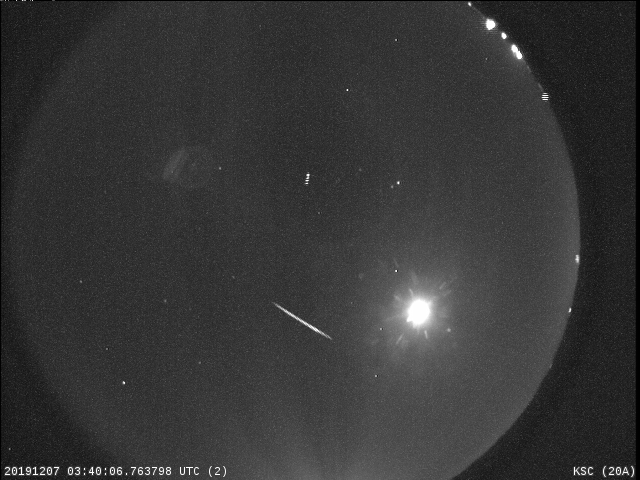With the holidays right around the corner, most of us are in gift-giving mode… and one of our favorite gifts every December is the Geminid meteor shower!
This year, the peak is during the overnight hours of December 13 and into the morning of December 14. If you can’t catch the Geminids on Friday night, no worries — viewing should still be good on the night of December 14 into the early morning hours of the 15th.
The Geminids are pieces of debris from an asteroid called 3200 Phaethon. Earth runs into Phaethon’s debris stream every year in mid-December, causing meteors to fly from the direction of the constellation Gemini – hence the name “Geminids.”
Under dark, clear skies, the Geminids can produce up to 120 meteors per hour. But this year, a bright, nearly full moon will hinder observations of the shower. Observers can hope to see up to 30 meteors per hour.

HOW CAN YOU SEE THE GEMINIDS?
Weather permitting, the Geminids can best be viewed from around midnight to 4 a.m. local time. The best time to see them is around 2 a.m. your local time on December 14. This time is when the Geminid radiant is highest in your night sky. The radiant is the celestial point in the sky from which the paths of meteors appear to originate.
The higher the radiant rises into the sky, the more meteors you are likely to see.
Find the darkest place you can and give your eyes about 30 minutes to adapt to the dark. Avoid looking at your cell phone, as it will disrupt your night vision. Lie flat on your back and look straight up, taking in as much sky as possible. You should soon start to see Geminid meteors!
As the night progresses, the Geminid rate will increase. If you see a meteor, try to trace it backwards. If you end up in the constellation Gemini, there is a good chance you’ve seen a Geminid. The Geminids are best observed in the Northern Hemisphere, but no matter where you are in the world (except Antarctica), some Geminids will be visible.
Good luck and happy viewing!
